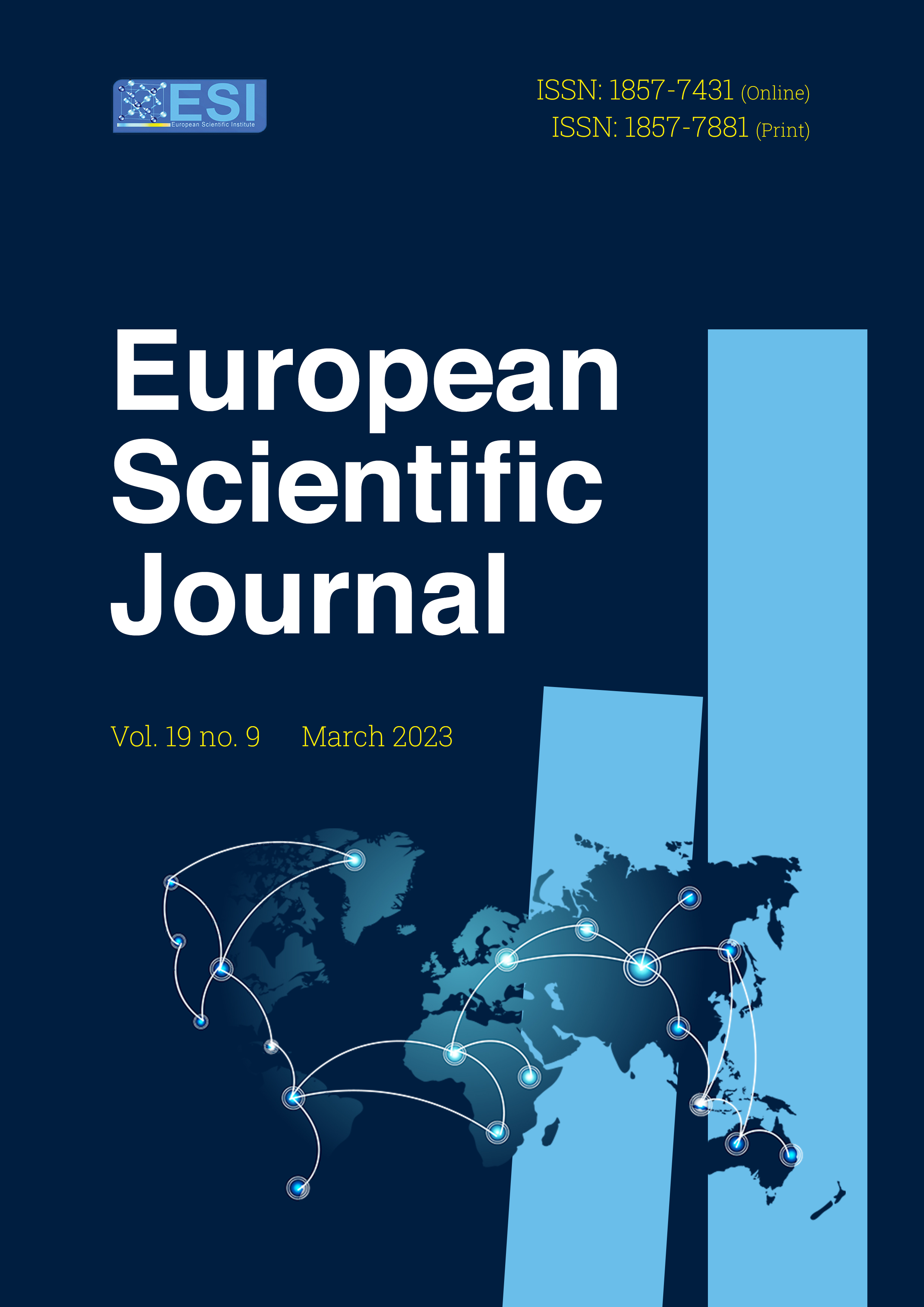Attitude Toward Continue Medical Education and Professional Development of Emergency Medical Personnel – Cross-Sectional Study of Physicians and Nurses
Abstract
Aim: Postgraduate education systems for medical professionals are constantly developing worldwide. The study aims to assess the knowledge and attitude toward the importance of continuing medical education and professional development of emergency medical personnel. Methodology and Design: Quantitative method study was conducted among Georgia "GEO Hospitals" regional clinics' emergency medicine department physicians and nurses. Study design cross-sectional study. Results: The attitude towards the knowledge and training of the clinic staff is heterogeneous, regardless of their qualification, and knowledge background. In addition to basic education, motivation is important for improving knowledge. In addition, the contact method is essential in training emergency management and life-saving. Conclusion: Continuous medical staff education with effective methods is essential for improving the qualification of medical personnel. This leads to high-quality treatment, the clinic's reputation, reliability, and safe patient care.
Downloads
PlumX Statistics
References
2. Basic Life Support Instructor Essentials Faculty Guide. 2021 (n.d.). Retrieved September 12, 2022, from https://ahainstructornetwork.americanheart.org/idc/groups/ahaecc-public/@wcm/@ecc/documents/downloadable/ucm_506913.pdf
3. Berduzco-Torres, N., Choquenaira-Callañaupa, B., Medina, P., Chihuantito-Abal, L. A., Caballero, S., Gallegos, E., San-Martín, M., Delgado Bolton, R. C., & Vivanco, L. (2020). Factors related to the differential development of inter-professional collaboration abilities in medicine and nursing students. Frontiers in Psychology, 11. https://doi.org/10.3389/fpsyg.2020.00432
4. Hojat, M., Gonnella, J. S., Nasca, T. J., Fields, S. K., Cicchetti, A., Scalzo, A. L., Taroni, F., Amicosante, A. M., Macinati, M., Tangucci, M., Liva, C., Ricciardi, G., Eidelman, S., Admi, H., Geva, H., Mashiach, T., Alroy, G., Alcorta-Gonzalez, A., Ibarra, D., & Torres-Ruiz, A. (2003). Comparisons of American, Israeli, Italian and Mexican physicians and nurses on the total and factor scores of the Jefferson Scale of attitudes toward physician–nurse collaborative relationships. International Journal of Nursing Studies, 40(4), 427–435. https://doi.org/10.1016/s0020-7489(02)00108-6
5. Holmberg, M. J., Ross, C. E., Fitzmaurice, G. M., Chan, P. S., Duval-Arnould, J., Grossestreuer, A. V., Yankama, T., Donnino, M. W., Andersen, L. W., Chan, P., Grossestreuer, A. V., Moskowitz, A., Edelson, D., Ornato, J., Berg, K., Peberdy, M. A., Churpek, M., Kurz, M., Starks, M. A., … Sawyer, T. (2019). Annual incidence of adult and pediatric in-hospital cardiac arrest in the United States. Circulation: Cardiovascular Quality and Outcomes, 12(7). https://doi.org/10.1161/circoutcomes.119.005580
6. Kaihula, W. T., Sawe, H. R., Runyon, M. S., & Murray, B. L. (2018). Assessment of cardiopulmonary resuscitation knowledge and skills among healthcare providers at an urban tertiary referral hospital in Tanzania. BMC Health Services Research, 18(1). https://doi.org/10.1186/s12913-018-3725-2
7. McGaghie, W. C. (2015). Mastery learning. Academic Medicine, 90(11), 1438–1441. https://doi.org/10.1097/acm.0000000000000911
8. Meaney, P. A., Bobrow, B. J., Mancini, M. E., Christenson, J., de Caen, A. R., Bhanji, F., Abella, B. S., Kleinman, M. E., Edelson, D. P., Berg, R. A., Aufderheide, T. P., Menon, V., & Leary, M. (2013). Cardiopulmonary resuscitation quality: Improving cardiac resuscitation outcomes both inside and outside the hospital. Circulation, 128(4), 417–435. https://doi.org/10.1161/cir.0b013e31829d8654
9. Nallamothu, B. K., Guetterman, T. C., Harrod, M., Kellenberg, J. E., Lehrich, J. L., Kronick, S. L., Krein, S. L., Iwashyna, T. J., Saint, S., & Chan, P. S. (2018). How do resuscitation teams at top-performing hospitals for in-hospital cardiac arrest succeed? Circulation, 138(2), 154–163. https://doi.org/10.1161/circulationaha.118.033674
10. Panchal, A. R., Bartos, J. A., Cabañas, J. G., Donnino, M. W., Drennan, I. R., Hirsch, K. G., Kudenchuk, P. J., Kurz, M. C., Lavonas, E. J., Morley, P. T., O’Neil, B. J., Peberdy, M. A., Rittenberger, J. C., Rodriguez, A. J., Sawyer, K. N., Berg, K. M., Arafeh, J., Benoit, J. L., Chase, M., … Magid, D. J. (2020). Part 3: Adult basic and advanced life support: 2020 American Heart Association guidelines for Cardiopulmonary Resuscitation and emergency cardiovascular care. Circulation, 142(16_suppl_2). https://doi.org/10.1161/cir.0000000000000916
11. Circulation. 2020;142(suppl 2):S551–S579. DOI: 10.1161/CIR.0000000000000903 Spinelli, G., Brogi, E., Sidoti, A., Pagnucci, N., & Forfori, F. (2021). Assessment of the knowledge level and experience of healthcare personnel concerning CPR and early defibrillation: An internal survey. BMC Cardiovascular Disorders, 21(1). https://doi.org/10.1186/s12872-021-02009-2
12. Søreide, E., Morrison, L., Hillman, K., Monsieurs, K., Sunde, K., Zideman, D., Eisenberg, M., Sterz, F., Nadkarni, V. M., Soar, J., & Nolan, J. P. (2013). The formula for survival in resuscitation. Resuscitation, 84(11), 1487–1493. https://doi.org/10.1016/j.resuscitation.2013.07.020
13. Vatn, L., & Dahl, B. M. (2021). Interprofessional collaboration between nurses and doctors for treating patients in surgical wards. Journal of Interprofessional Care, 36(2), 186–194. https://doi.org/10.1080/13561820.2021.1890703
Copyright (c) 2023 Manana Machitidze, Nona Goshadze

This work is licensed under a Creative Commons Attribution-NonCommercial-NoDerivatives 4.0 International License.








